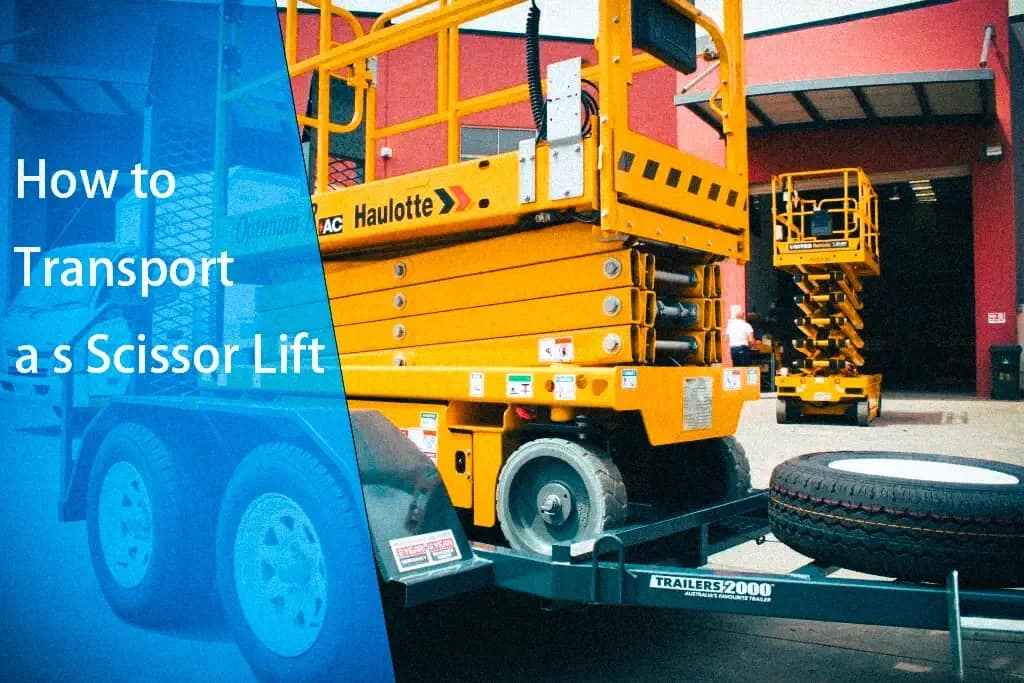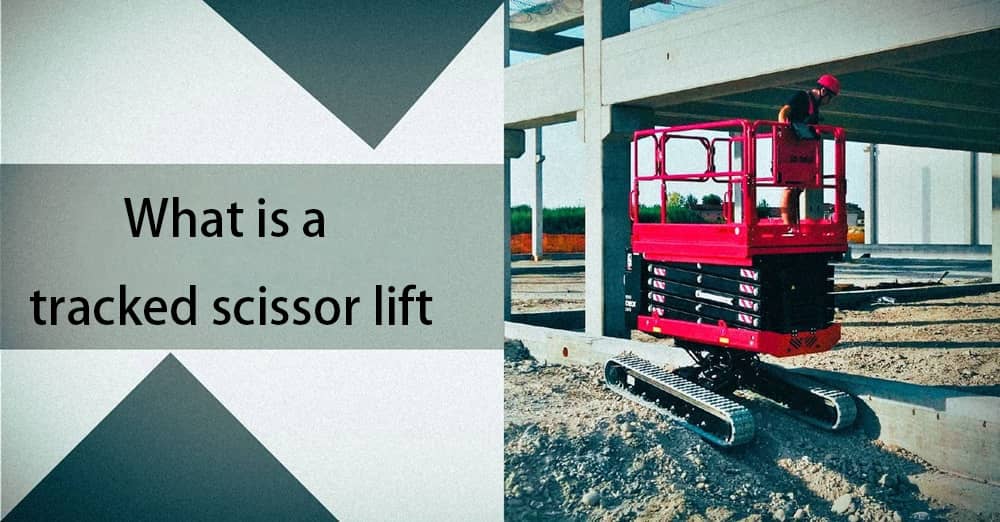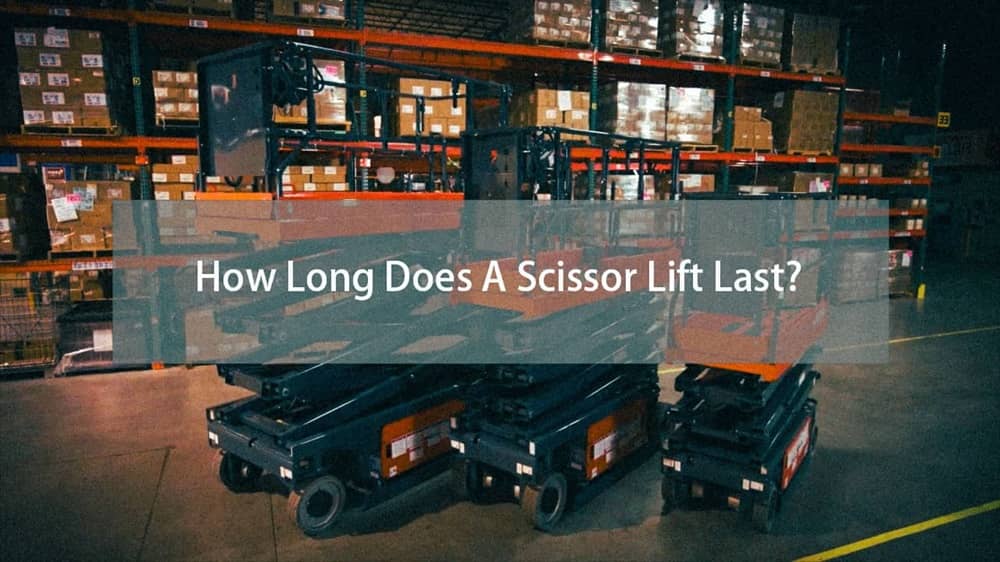Scissor lifts are very versatile and used increasingly in different industries, e.g., construction, maintenance, warehousing, and setting up events. Completely transforming our approach to tasks performed while working at an elevation, the scissor lifts can also take multiple workers and heavy loads simultaneously. However, the use of scissor lifts extends beyond their on-site capabilities. Proper transportation of these machines is necessary to ensure that they arrive safely at their destination and begin working in optimal condition. Improper handling during transportation can lead to accidents.
This Holdwell guide to how to transport a scissor lift will walk you through the steps to safely transport these valuable pieces of equipment, from pre-shipment inspections to securing the lift and overcoming road challenges. By following the steps below, you’ll help reduce risk, protect your investment, and ensure that your scissor lift is operational as soon as it arrives at its new location.
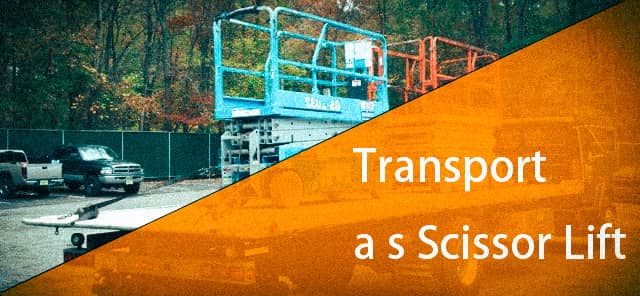
Pre-Transport Inspection:
Prior to transporting the scissor lift, you must conduct an in-depth inspection. Confirm its weight and dimensions, details that can be sourced from the manufacturer’s manual or the data plate of the machine. This information is critical in choosing the specific transportation method appropriate for that scissor lift.
Follow that up with whatever the manufacturer’s manual says about transport details. There may be different requirements or recommendations that come with specific models.
Inspect the platform for any visible damage or loose parts. Check particularly for the condition of the scissor mechanism and hydraulic systems, as well as any attachments. Ensure all items are secure and in good working order.
For models with pneumatic tires, you will want to check the tire pressure. For battery-powered lifts, be sure the batteries are fully charged and secure.
Regulatory Requirements:
Location and size of your scissor lift may also require special permits or licenses for transportation, which you would know from your Department of Transportation. Also, be aware that there may be road restrictions, especially height limitations. Many bridges and overpasses have restrictions based on the maximum height allowed, and this could be a problem for you when you want to transport this lift. The best advice would be to plan your route according to the height restrictions in place to avoid any last-minute problems.
Transporting the Scissor Lift
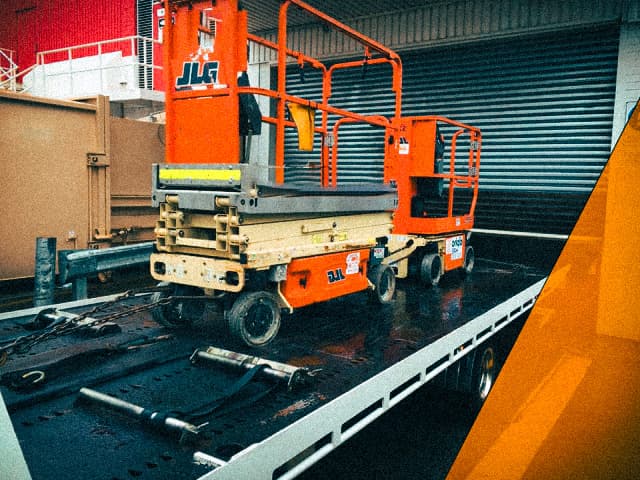
Choosing the Right Trailer/Truck:
Choose the right trailer or truck to ensure safety during transport. The vehicle or trailer should be rated to handle the weight of the scissor lift. Choose a trailer that exceeds the weight of the lift. Always error on the side of caution and choose a trailer with a higher weight capacity than your lift’s weight.
Consider the length and stability of the trailer. Lengthier trailers provide superior weight distribution plus stability while in transit. Make sure the trailer is broad enough for the lift to fit in comfortably.
Various trailer types that can be used in carrying the scissor lift:
- Flatbed trailers have an easy method of loading and unloading but additional securing may be required.
- Tilt-bed trailers might make the loading process easier, especially with the larger lifts.
Here are some necessary steps that must be followed to load the scissor lift safely:
1. Position the trailer on level ground and place the parking brake on.
2. Lower the trailer ramps, making sure they are well secured.
3. Drive the lift onto the trailer if possible. If not, winch it up slowly.
Safe Loading Procedure:
- Park the trailer on level ground and set the parking brake.
- Lower the trailer ramps and make sure they are securely attached.
- Drive the scissor lift onto the trailer, if possible. If driving it onto the trailer is impossible, and then winch it up slowly.
- During loading, have at least one person assist to guide the operator as well as to watch for any possible issues.
- Lower the scissor lift platform to its lowest position once on the trailer.
- Set brakes or chock wheels.
The most important step in the transportation process is properly securing the lift. Use chains, straps, or binders of adequate quality with a rating equal to or above the weight of your lift.
Always attach tie-downs to the designated anchor points on the scissor lift. These points are usually marked and mentioned in the manufacturer’s manual. Do not tie off to railings or any non-structural components.
Use at least four tie-down points, preferably in a criss-cross pattern for utmost stability. Ensure the chains or straps are taut but not over-stressed.
After securing, give the lift a gentle shake to test for movement. It should be rock solid on the trailer— zero movement. Re-test the tension on all tie-downs before hitting the road and then check periodically throughout the trip.
Remember, proper preparation and securing are the key to safe transportation of your scissor lift. Follow these steps in some detail, and your equipment will be at the destination— in one piece, ready for work.
During Transportation
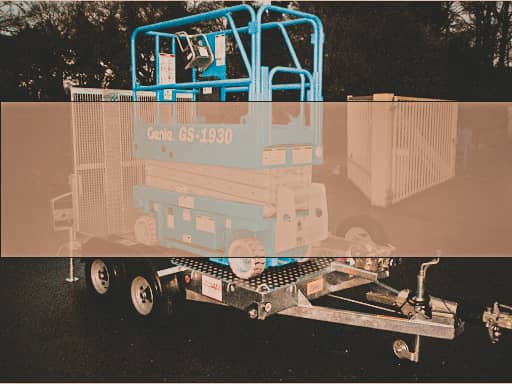
Safe Driving Practices:
When carrying out the transportation of a scissor lift, it is very important to practice safe driving. You must lower your speed and drive carefully, especially around the corners or on an uneven surface. The extra height and weight resulting from conveying the scissor lift in your trailer can make a significant difference in the handling and stability of your vehicle.
Be especially conscious of the added height to your vehicle. Many drivers tend to forget about the necessity of extra clearance and find themselves in problems with low bridges or overhanging trees (or even power lines!). Always keep an eye on your surroundings, and where possible, plan your route to avoid any height restrictions.
Make stops during the journey to recheck the security of the scissor lift. At times, vibrations from the road may cause the straps or chains to get loose; therefore, they should be inspected and retightened as necessary. It would avoid a hazardous position with the payload held higher up.
Unloading the Scissor Lift
The unloading process is just as critical as loading. Position your trailer on level ground and set the parking brake. Remove all tie-downs and securing devices by hand, making sure that the lift is as stable as possible before undoing them.
If possible, have another person present during unloading. They will direct and watch for hazards as you drive or winch the lift from the trailer.
All ramps must be properly positioned and secured before the scissor lift is driven or winched down, which should be done slowly and steadily while maintaining alignment. After it gets on solid ground, make a brief inspection to ensure that no damage has occurred during transport.
Here are Some More Tips and Considerations
Choose a Professional Transporter:
Although many companies transport the scissor lift themselves, there are situations in which a professional transporter should be hired:
1. Long-distance transportation: More often than not, such professional services are cost-effective, and of course, make the long haul safer.
2. Lack of experience: For those who may not be practiced in this area of transporting heavy equipment, professionals can guarantee that the job is completed properly and safely.
3. Insufficient equipment: Most professional transporters have the required special equipment for moving heavy machinery.
Here are all the necessary things you should look for in a transportation company:
– Proper licensing and insurance
– Experience moving scissor lifts or similar equipment
– Good reviews and testimonials from past clients
Insurance Coverage:
An important consideration to make before allowing the transport of a scissor lift is your insurance coverage. Most basic auto insurance will not cover such damages related to or caused by transported equipment. Consult the insurance company to ensure enough coverage on:
– Damage that may occur to the scissor lift while transportation
– Damage caused to other vehicles or property because of the lift being transported
– Liability if an accident happens concerning the transportation
Consider additional coverage, like inland marine insurance, if you need to transport the equipment.
Safety Gear:
The proper safety gear that should be utilized by anyone participating in loading, unloading, and securing the scissor lift is as follows, at a minimum:
– Work gloves: for protecting hands during the handling of chains and straps and attaching other securing devices
– Safety glasses: will protect the eyes from debris or an accident
– Steel-toed boots: will protect feet from any object that might fall during an accident
High-visibility vest: To make sure that one is seen, especially when it is low light or near traffic
Other times that he may need it include when materials are being raised above him (e.g., during loading or unloading a scissor lift).
By following these guidelines and considering the additional factors noted, you will be able to assure a safer and more effective process in transporting your scissor lift. As a rule of thumb, successful transport depends on careful planning with the right equipment and a high degree of commitment to safety through every step of the process.
At Holdwell, we understand the complexities involved in transporting and maintaining scissor lifts. As experts in used lifts, we not only offer a wide range of quality equipment but also provide valuable advice to ensure your operations run smoothly and safely.
Whether you’re in the market for a scissor lift or need guidance on transportation and maintenance, we’re here to help. Visit our website to explore our extensive range of used scissor lifts, or contact our team of experts for personalized assistance. Our knowledgeable staff can guide you in selecting the right equipment for your needs and offer additional tips on safe transportation and operation.
Don’t let transportation challenges hold you back – reach out to Holdwell today and elevate your projects with our reliable used lifts and expert support!

